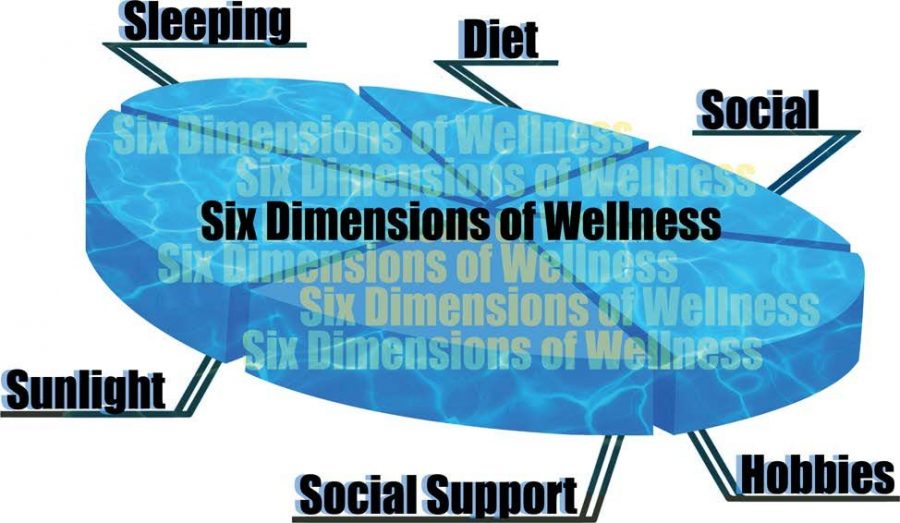Avoiding the grip of depression
August 20, 2014
Following the news of actor/ comedian Robin Williams’ suicide, the Internet became flooded with everything from endearing tributes to tasteless ‘trolling.’ While this has become the norm in a microblog-driven society where the death of a celebrity can often be a hotter topic than their lives, the incident also brought a large, dark cloud into the spotlight – depression.
According to a report by the World Health Organization published in 2012, depression is a global pandemic from which more than 350 million people suffer. While the degree may vary dependent on the individual, depression of any kind is not a problem to be taken lightly. While the disease knows no age or social status, it’s something that college students need to be especially aware of.
“It usually starts about three or four weeks into the semester, said Jaime Olsen, LCP of Washburn Counseling services. “Especially for the first year students, it might start as a little bit of homesickness, but can lead into depression.”
A Washburn alum who returned to campus to help students cope with the stress and rigors of college life, Olsen identifies some signals that might indicate a problem is developing.
“The first warning sign is if someone is acting differently,” said Olsen. “Exhibiting a change in behavior from what you’ve known in the past.”
Time, Olsen said, is the key in distinguishing the difference between behavioral changes brought on by depression versus having a typical case of the blues.
“People have the right to be sad, but if things are going beyond the two week mark, it goes from someone just being sad or a little depressed into clinical depression.”
While the causes of depression can be many, Olsen mentions one that she feels all students should be aware of – overuse of social media. Recent findings indicate that spending too much time liking pictures and commenting on posts could do more harm than good.
“What we’ve learned about social media and depression is that a lot of times, people will be more depressed after being on Facebook than they were before they got on Facebook,” said Olsen. “I think it’s because we compare ourselves to other people, ‘Oh, they had a great vacation and I didn’t. Look at all of that fun stuff they did that I didn’t do.’ When you’re starting at your phone or computer screen, you’re detaching yourself from real interaction. People lose a lot of time on social media that they could spend connecting with other people.”
When severe depression goes unchecked for too long, suicide can become a very real concern. Much more than just an empty cry for attention, Olsen says that any mention of suicide is something that requires immediate attention.
Thoughts or conversations about suicide typically fall under two categories.
“We have what we call passive suicide thoughts,” said Olsen. “People will say ‘I don’t want to wake up tomorrow’ or ‘I wish something would happen to me.”’It’s very significant when you hear people talk like that.”
The other, and most serious type of suicidal thoughts, active, is defined by a specific plan to take one’s own life.
“They’ll talk about taking a bunch of pills, or about driving their car off a bridge,” said Olsen. “Those are very urgent and we need to pay attention to them right away. If someone is talking about not having anymore hope or that they don’t see any reason to go on, those are signs that we need to get that person talking to a professional very quickly.”
To combat the effects of depression, Olsen urges people to focus on six factors that contribute to emotional well being – sleep, diet, social interaction, social support, hobbies and sunlight. These are all part of the six dimensions of wellness.
“Make sure you’re consistently getting six to eight hours of sleep each night,” said Olsen. “And that you maintain a fairly well-balanced diet and are eating throughout the day.”
Getting at least 15 – 20 of sunlight per day is recommended, which can be tricky when a full class load, work and studying are factored into the equation. But it’s more important than most realized and often overlooked.
“Make sure you’re engaging with other people and not isolating yourself from everyone,” said Olsen of the social aspects of the six dimensions. “Make sure you have healthy people in your life and things to do that you enjoy.”
Aside from these internal weapons in the fight against depression, seeking help from a professional is something nobody should hesitate to consider, regardless of how severe they think the problem is. At Washburn, that help can be found at Counseling Services, which is located on the first floor of the Henderson Learning Resource Center.
“Lots of people think that you need to be really sick to come in and get counseling services,” said Olsen. “What I would really to get people to understand is that counseling services is here to make sure students stay well. Even if you’re feeling like you’ve hit a bump in the road, go ahead and come in and talk to us. We’ll help you keep that at just a bump, instead of growing into something bigger.”
Additional resources are available at Student Health Services in Morgan Hall and at the Student Wellness and Rec Center, where one can go to join an exercise group, get nutritional advice or enjoy some healthy social interaction. All of these services are free of charge for currently enrolled students.
If you or someone you know is showing signs of depression, don’t hesitate to drop into Henderson 111 or call (785)670-3100 to make an appointment.
More information can be found at www.washburn. edu/currentstudents/services/ counseling/



